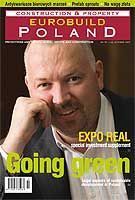Prefabricated steel structures could be the way forward for residential development in a world of scarce resources and increasing energy costsIf asked which materials you associate with a healthy environment, steel may not be the first answer that springs to mind. “People remember the bad old days when smoke belched out of the top of steel mills,” says Lucien Weber, of the technical advisory of steel producer Arcelor-Mittal. But he insists that the manufacturing of steel is actually extremely clean: “Now, modern and efficient electric filters are installed so that the smoke pollution and emission of particles has been reduced to almost zero. The negative image of steel has absolutely no foundation in today’s manufacturing practices,’ he explains. Up and downAccording to Mr Weber, the most important environmental advantage of steel lies in its potential for being reused and recycled. And this is especially true in the construction of buildings, and is a fe






























































